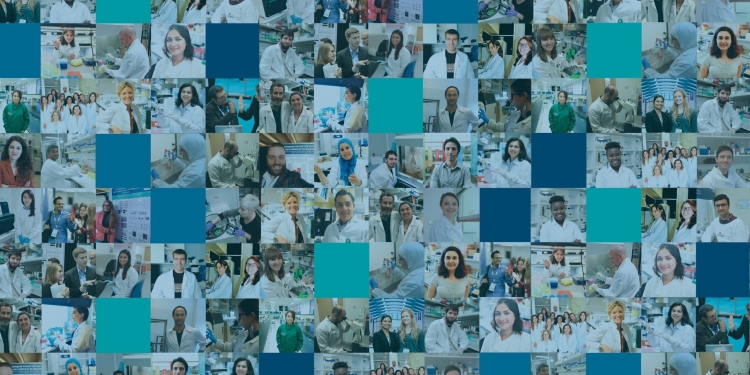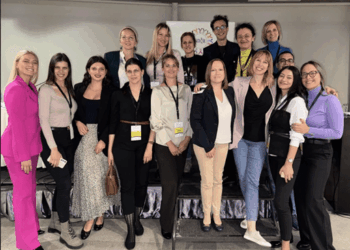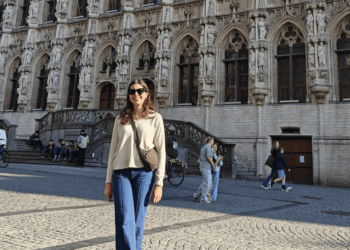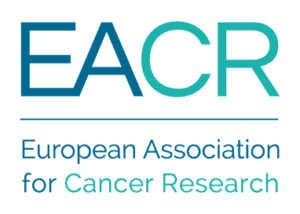Seung Hyun Lee is a PhD student at the Cancer Research UK Manchester Institute and University of Manchester, UK who received an EACR Travel Fellowship to visit and work at Stanford University, US between January and February 2025.
The EACR, with support from Worldwide Cancer Research, provides Travel Fellowships of up to €3,500 to enable early-career cancer researchers to gain new skills through a short-term visit to a lab or research group in another country.
You can read about other Travel Fellows and their experiences here.
 Name: Seung Hyun Lee
Name: Seung Hyun Lee
Job title: PhD student
Home institute: Cancer Research UK Manchester Institute and University of Manchester, UK
Host institute: Stanford University, US
Dates of visit: 13 January – 07 February 2025
Research: I aim to improve the survivorship of pancreatic cancer patients by discovering strategies for early detection using approaches which combine my clinical background as a pathologist with cutting-edge imaging and data science. I have created a comprehensive atlas of pancreatic tissue which spans the spectrum of normal to cancerous tissue including dysplastic epithelium, known as PanIN. This will help us to gain a deeper insight into how the ecosystem of tumour cells and our own cells (immune cells, blood vessels, connective tissue and neurons) evolves as the disease progresses to become an aggressive cancer or pauses as an indolent precancerous form, and to find the potential targets to fight this lethal cancer.
Why did you choose to apply for an EACR Travel Fellowship?
The EACR Travel Fellowship programme was recommended by my lead supervisor, Professor Jorgensen. I learned that it is an excellent programme specifically designed to enable researchers in early career stages, in the cancer research field, to gain new skills through visiting a lab in another country. This is a well-run and structured programme with regular rolling review of applications, that supports a wide range of researchers (within 8 years of postdoctoral experience). It shows that the EACR and Worldwide Cancer Research are very keen to support early career researchers to grow by working with and learning globally. The application procedure was comprehensive and straightforward. These factors made me decide to apply for an EACR Travel Fellowship. Further, I am an enthusiast of the EACR, a fantastic global community for cancer researchers that provides great support, educational and networking opportunities.

Why did you choose the host lab?
I chose the Plevritis lab for three main reasons. First, Professor Plevritis is truly inspiring with her inter-disciplinary, innovative, and forward-thinking approach. As the Chair of Department of Biomedical Data Science (DBDS) and Director of Centre for Cancer Systems Biology (CCSB), she has made extensive contributions to analyse and derive novel biological findings from complex cancer data, including multiplexed immunofluorescence (mIF) imaging in which I have developed an interest. She works persistently to do better science as well as to nurture the next generation of innovative researchers. Her lab also comprises both wet-lab and dry-lab scientists with a diverse backgrounds and skills sets. I was keen to learn from and collaborate with the world leading expert in analysing the spatial data I have generated using Phenocycler-Fusion mIF technology.
Secondly, we have common interests in early detection of cancer and tumour microenvironment analysis via scalable systems biology approaches on multi-omics dataset.
Thirdly, DBDS and CCSB at Stanford University strongly supports inter-disciplinary data-driven collaborative research and regularly hosts educational and networking events for junior and senior researchers. It provided a platform for me to meet other early career researchers and leaders in the digital pathology and multi-omic research field, which was exciting and inspiring.
“Step out of your comfort zone and learn new things, meet new people in a new place. You will be inspired!”
Can you summarise the research you did and what you learned on your visit?
My research focus is early detection and prognostication of Pancreatic Ductal Adenocarcinoma (PDAC) and stratification of its main precursor lesion, Pancreatic Intraepithelial Neoplasia (PanIN). The objective of my ongoing study is to create a digital pathology atlas by charting the cellular composition and interactions between pre-cancerous state (non-neoplastic pancreatic duct and PanIN) and PDAC. I have therefore created a single cell resolution reference map of pancreatic tissue via in situ multiplexed immunofluorescence (mIF) imaging to reveal compositional and architectural changes throughout progression.
With support of the EACR Travel Fellowship, I analysed this comprehensive imaging data with the lab of Professor Sylvia Plevritis, to augment my ongoing computational analysis of a spatial dataset I have generated. Specifically, I advanced my project through an unsupervised machine learning algorithm tailored to mIF image data, CELESTA, which Plevritis lab developed. Like a histopathologist reviewing a slide of tissue, and assessing immunohistochemical profile and spatial information, CELESTA identifies cell types based on the marker expression profile and spatial positioning of individual cells. I identified over 29 cell types by integrating my own unsupervised cell type discovery approach and CELESTA. This formed a foundation of further cellular composition, pairwise interaction and neighbourhood analysis.

Have you brought back any specific knowledge or technique that has benefited your home lab?
My home lab is dedicated to studying pancreatic ductal adenocarcinoma, the most common type of pancreatic cancer, and one of the main techniques used is multiplexed immunofluorescence (mIF). mIF is a powerful tool to capture protein expression of target cells at single cell resolution. However, analysis of this type of data is very challenging as tools are limited and are mainly been based on modification of single cell transcriptomic informatics.
I have returned from the visit with the lab of Professor Plevritis with new knowledge and techniques in mIF data. Specifically, I acquired analysis techniques in pre-processing mIF image data through extensive discussion about segmentation optimisation, data extraction strategies; and computational identification of specific cell types (phenotyping) with accuracy via CELESTA that Plevritis lab developed. This enables identification of cell types based on individual marker expression profile and spatial information. I integrated my histopathology knowledge and skills to combine the standard method of using CELESTA, with Plevritis lab’s constant feedback. This has already benefited my home lab as I have shared my learning points and approach through a 2-hour meeting with all group members, many of whom work on mIF data to review mouse and human pancreatic tissue architecture during carcinogenesis.
How has this visit been beneficial to your research and your career?
As I aspire to become an academic molecular and cellular pathologist, the visit was one of the most beneficial opportunities to my research and my career. I aim to advance personalised healthcare and patient journey by leveraging biomedical data, machine learning and artificial intelligence. This is in line with the aim of Stanford Department of Biomedical Data Science. Therefore, I embedded myself in the ecosystem of diverse disciplines interacting closely with each other. I took advantage of learning opportunities (a) in technical aspects from day to day work in close liaison with Plevritis lab as well as (b) in broadening my thinking and horizon via monthly educational seminars and via networking at Stanford Department of Biomedical Data Science Collaboration and Careers forum. During this visit, I came to appreciate that the realisation of precision health and medicine, powered by intense collaboration between scientists and clinicians, is are very close, within immediate reach. Through visiting this wonderful community, I am taking away the vision, strategy, interdisciplinary thinking, strength in analysis techniques and drive, which will benefit my research and career. I deeply appreciate the support provided by EACR and Worldwide Cancer Research.
Is there anything else you would like to mention?
Although it was a short visit, it is surprising how much one can learn by being part of a lab in another country. Without a doubt, this was one of the most eye-opening experiences I have ever had in my life. Every day was a highlight of my trip. So, I highly recommend the EACR Travel Fellowship – step out of your comfort zone and learn new things, meet new people in a new place. You will be inspired!
Want to find out more?
If you are interested in applying for the Travel Fellowship scheme, please click here for more information: EACR Travel Fellowships.








